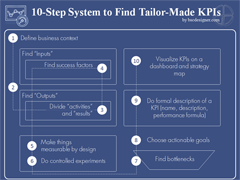This indicator is for measuring the average absenteeism rate per employee, as a % of the total working days. This KPI is used as an indicator of employee motivation because, in management terms, a high absence rate resembles a low motivated individual. Studies and reviews have shown that low motivated employees are more likely to call in sick or skip days of work, rather than highly motivated employees.
A company’s aim is to reduce this figure, for cost reasons and also for performance reasons. Low motivated employees with a high absence rate will affect the overall achievement of the organisation’s goals and their profitability in the market. Hence, the organisation will put in place strategies and practices to minimize this figure, generally lead by the HR Department.
Formula:
Total number of absent days per employee/ total number of working days x 100
Where Total number of absent days per employee is calculated as:
Total number of absent days / total number of employees
KPI Units: %
KPI Time Frame: update annually
Example:
Company A, of 400 employees, is measuring the absenteeism rate per employee over a year period:
Total number of absent days per employee:
Total number of absent days in the year: 1000
Total number of employees: 400
1000/400 = 2.5 absent days per employee
Total number of working days: 260 (in a year) per employee
Absenteeism Rate per Employee:
Total number of absent days per employee / total number of working days x 100
2.5 / 260 x 100 = 0.96 %,
Therefore, the absenteeism rate per employee is under 1 % (unlikely result in real life)
This will probably be a result of 200 or more employees with no absent days, and the rest of employees with a few absent days a year.



